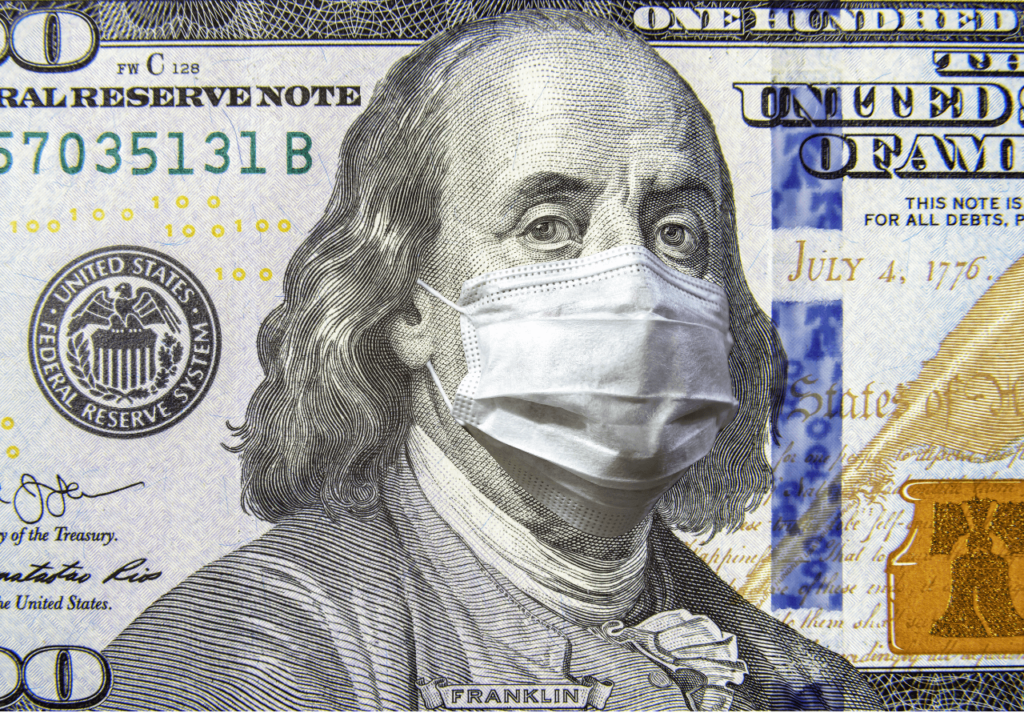Coronavirus disease 2019 (COVID-19) – nothing could be more topical. Everyone has been writing about COVID-19 for months since there is little other news. No sports events to recap. No concerts or plays to critique. No craft brewery or restaurant experiences to review. No celebrity hook-up/spit-up drama to report. But hey, we are magazine columnists and obliged to fill the page each month, so here are our musings about intellectual property and COVID-19. By the time you read this, the status of everything may have changed – that’s the danger of trying to write about current events in a monthly column.
TRADEMARKS
Americans have never had a shortage of bad ideas, and our federal trademark filings often serve as an early warning system of our idiocy, based on news-of-the-day and pop culture. For instance, 44 U.S. trademark applications were filed for the term COVFEFE since Donald Trump’s curious and aborted Tweet shortly after midnight on May 31, 2017. None of those applications became registrations and only five remain pending including (of course) one for the term COVFEFE-19 filed March 23, 2020 (for clothing) by a New Jersey resident.
Since February 1, 2020, over 200 U.S. trademark applications have been filed based on the terms COVID, CORONAVIRUS and PANDEMIC, for all sorts of products and services. We must admit that we are involved in a couple of these. Many legal pundits opine that these terms will be considered as descriptive or generic by the U.S. Patent & Trademark Office (USPTO). We agree. Such applications for T-shirts are stupid, and include COVIDiot, #CORONAVIRUS and PANDEMIC COUTURE. None of these will effectively serve as a T-shirt source identifier – the fundamental purpose of a trademark. Other applications seem more legitimate (at least in part), such as COVID-STAT for diagnostic test kits. We’ll see if any of these applications survive examination by the USPTO.
PATENTS
Many claim to be filing new patent applications for devices, machines, tests or treatments for COVID-19. Again, we must admit some involvement in that activity.
Worldwide, many patent offices suspended operations to help flatten the curve. The USPTO did not do so, but did extend the time to take certain actions – if accompanied by a statement that the delay was “due to the COVID-19 outbreak.” Such a delay was triggered when an applicant, patent owner, inventor or patent attorney was “personally affected by the COVID-19 outbreak” (while considering factors like office closures, cash flow interruptions, travel delays or even … duh, illness). Many have been trying to avoid making such a statement as it may provide some lawyer (ten years from now) one more line of questioning to explore while trying to invalidate the patent under scrutiny.
A patent owner has the right to exclude others from using the patented invention. It’s a personal right. Can you see the tension here when those private rights come up against the need for serving the public good in the face of a pandemic? Numerous proposals have been floated about how to access private patent rights in our collective battle against COVID-19. Compulsory licensing, government taking and “The Open COVID Pledge” for licensing are just some of those proposals. For the most part, we believe such access will happen organically, at least for patent owners that aren’t merely patent trolls. No one wants to be the company that sued someone for patent infringement because the alleged infringer’s actions were going to save lives from COVID-19. That would lead to a public relations and social media firestorm.
COPYRIGHTS
Stay-at-home orders mean that everyone is online, all the time. Schools at all levels moved to a 100% distance learning model. Librarians, astronauts and Michelle Obama all held virtual story times. Places of worship used livestreaming to stay connected to worshippers. Online fitness sessions (backed by music) were there to get us off the couch. All of this raises some interesting copyright issues where teaching materials, books, images and music may have been licensed for in-person use/performance, but the online distribution of those works exceed those licenses. Anecdotally, we’ve heard that such licensors have generally and graciously allowed these expanded uses (at least for now). Again – we believe in good human nature, but we’ll see where all this goes when we land on our “new normal” way of doing things.
TRADE SECRETS
Stay-at-home meant work-from-home for many in the corporate world. Those affected are the folks who routinely handle and communicate about a company’s most sensitive information like financials, market plans, customer lists and pricing. Suddenly, the “secure” corporate office network now includes branches that lead to all sorts of “secure” home office networks (and just as suddenly, the most “essential” employee at any company became its network administrator). Time will tell what all this means in the world of trade secrets protection. Stay tuned …. Z. Peter Sawicki James L. Young








